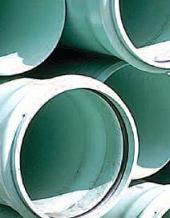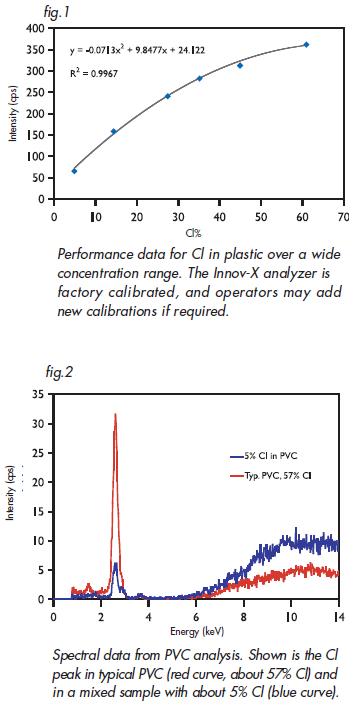 | OverviewChlorine's unique chemical properties allow for numerous and varied applications. The primary use for chlorine is in the construction industry for the manufacture of polyvinyl chloride (PVC) - a product with flexibility, durability, dependability, versatility, and resistance to leakage, flame, corrosion, and microbial growth. PVC is typically about 55% chlorine. Unfortunately, one of the downsides of PVC is its potential to cause harmful environmental side effects. When PVC is burned, hydrochloric acid and dioxin can be created and released to the environment. Some believe that before it actually burns, decomposing PVC can cause the most immediate threat to humans. This is of particular concern in building fires where PVC, used in the wiring and plumbing inside of walls, can overheat and decompose at lower temperatures - before there is actual ignition. |
The greatest long-term threat from PVC is when it is recycled at the end of its useful life. Due to the wide range of additives and formulations that go into these products, testing for PVC is necessary to ensure that dioxin and toxic metals are not emitted into the air during recycling incineration.
In addition to PVC being a health hazard, the corrosive nature of the hydrochloric acid generated can seriously damage recycling equipment - including the metal and masonry in incinerators.
PVC also can adversely affect the quality of other recycled plastics, such as Polyethylene Terephthalate (PET), which greatly decreases the value of the recycled product. Recycling facilities need to separate out unwanted PVC containers. The detection of chlorine, which is typically in the 50+% range in PVC, is an ideal way to separate out the PVC from the other plastics.
Key Features of the Handheld XRFThe handheld, point-and-shoot XRF analyzer provides on-the-spot quality data about chlorine and facilitates high-throughput testing of materials. It identifies PVC and quantifies Cl content in as little as 3 seconds. In a 3-second sorting test, the detection limit is about 1% Cl. This X-ray tube-based handheld XRF system replaces the need for multiple isotopes used in older systems and eliminates their burdensome radioactive source regulatory issues - particularly for interstate and international travel. The analyzer also quantifies Br, Sb, Ba, Zn and toxic metals such as Pb, Cd, Hg, Cr and As in seconds. |  |
| Performance Parameters | |
| Typical Sorting Time PVC (sec) | 2-3 |
| Cl Detection Limit (%) | 1 |
| Analysis Testing Time (sec) | 30 |
| CI Detection Limit (%) | 0.35 |
On-the-Spot Chlorine (Cl) AnalysisPortable XRF technology offers simple and immediately accurate chlorine test results, non-destructively, at the point of use. Factory calibrations for Cl, Br, Sb, and 20+ metals provide concentrations in ppm or percent values. The user may also add new elements or create custom calibration curves at any time. A typical Cl calibration curve in Figure 1 shows that the quadratic fit of data for Cl in plastic has an excellent R2 value of 0.9967. PVC is typically sorted with a 2-3 second test. A 5-second Fast Sorting LOD for Cl in PVC is about 1%. For some applications, operators want to see lower level Cl concentrations by performing longer tests. The estimated limit of detection for Cl in PVC is 0.35% for a 30-second measurement (see Figure 2). A portable XRF analyzer is an inexpensive, easy to use, preventative maintenance tool for in-situ analysis of chlorine in PVC. It also analyzes alloys and environmental samples, plus is used for numerous other materials analysis applications. The portable XRF system is a proactive trouble-shooting tool to help indicate potential process and equipment problems before failures occur. It is non-destructive and can also be used as a cost-effective screening tool to save time and money by helping engineers determine which materials require further investigation - including thorough lab analysis. SummarySignificant advancements have taken portable XRF technology to the next level for elemental analysis. Whether for fast sorting by non-technical operators, or customized analytical analysis in the lab, the portable XRF analyzer is affordable, easy to use, reliable, and overall cost effective. |  |
This handheld portable tube-based analyzer incorporates state-of-the-art components including a battery operated miniature X-ray tube, a high-resolution silicon pin detector, high speed data acquisition circuitry, and an internal miniature PC for calculations, results, data storage and operator interface. The single "tube" design offers true simultaneous analysis of metals. It replaces the need for multiple isotopes used in other systems and eliminates their burdensome radioactive source regulatory issues, particularly for interstate travel.




